Economical HVAC Thermal Zoning for Cleanrooms: Agricultural Applications
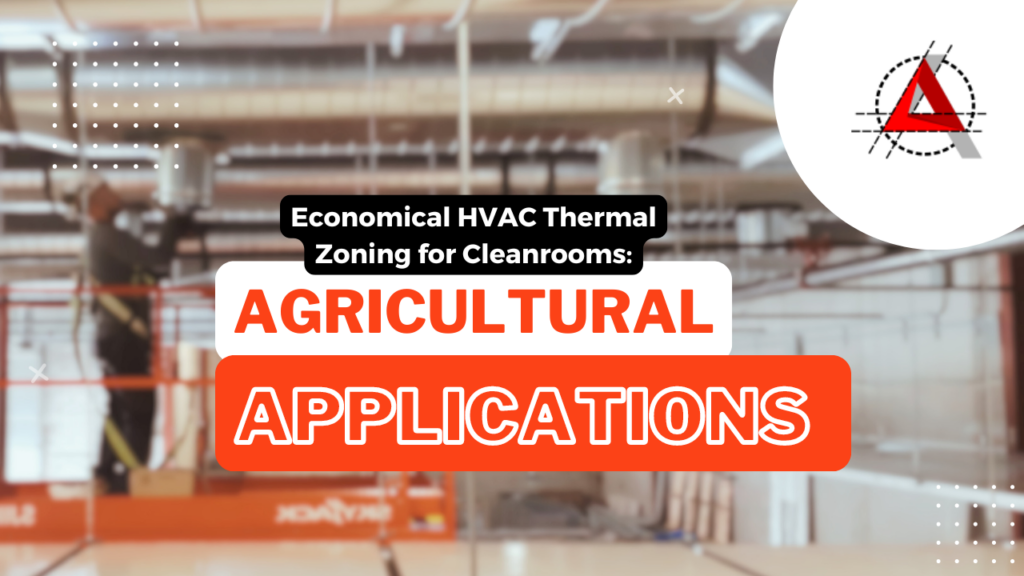
Here at ACH-A Cleanroom Hub, we specialize in designing and building top-of-the-line cleanrooms that meet the unique demands of various industries. Today, we are diving into how economical HVAC thermal zoning can transform agricultural cleanrooms, focusing on high-value crops like medical mushrooms and cannabis. We will discuss the balance of capital and operational costs, climate flexibility, and the critical role of ventilation and CO2 management, all while highlighting a recent project where we used a Dedicated Outdoor Air System (DOAS) to achieve optimal results.
Why Cleanrooms Are Essential in Agriculture
For crops like mushrooms and cannabis, cleanrooms provide an environment where every detail—temperature, humidity, and air quality—is precisely controlled. This level of control is crucial for maximizing yield and maintaining quality. To achieve this, having the right Heating Ventilation and Air Conditioning (HVAC) system is essential.
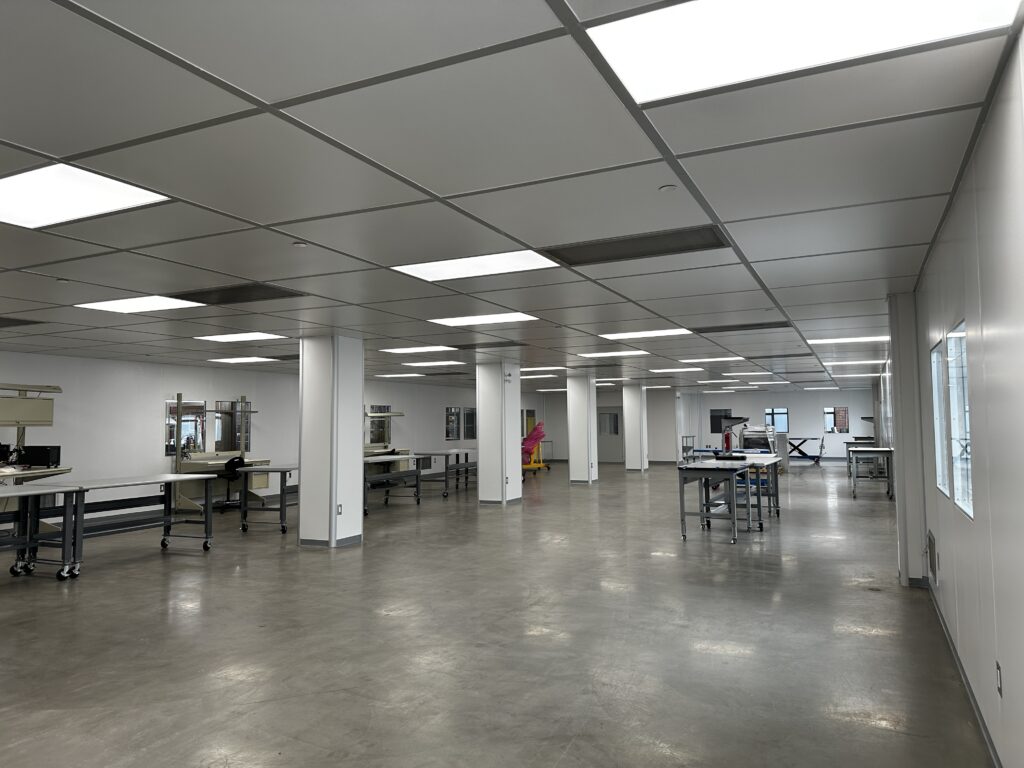
The Role of HVAC Thermal Zoning
HVAC thermal zoning involves dividing an indoor space into separate areas, each with its own tailored climate control settings. This technique is crucial not only for accommodating the diverse environmental needs of different crops but also for addressing the varying requirements of the same crop at different growth stages. For instance, in agricultural cleanrooms, mushrooms and cannabis may require distinct conditions at various phases of their development. Effective thermal zoning ensures that each zone can be precisely adjusted to meet these evolving needs, providing optimal conditions throughout the entire growth cycle.
Capital and Operational Costs
Designing HVAC systems for cleanrooms involves balancing initial investments with long-term operational costs. Modular cleanrooms, while potentially more expensive upfront, offer flexibility and scalability. This means you can start with a system tailored to your current needs and expand or adjust it as your requirements evolve.
- Capital Costs: This encompasses the costs of HVAC equipment, installation, and the integration of zoning technology. Modular cleanrooms facilitate incremental upgrades, which helps manage initial expenses.
- Operational Costs: These ongoing costs include energy consumption and maintenance. Investing in energy-efficient HVAC systems, such as those with variable-speed fans and high-efficiency heaters, can lead to significant savings over time. Heat recovery systems can also help reduce energy costs further.
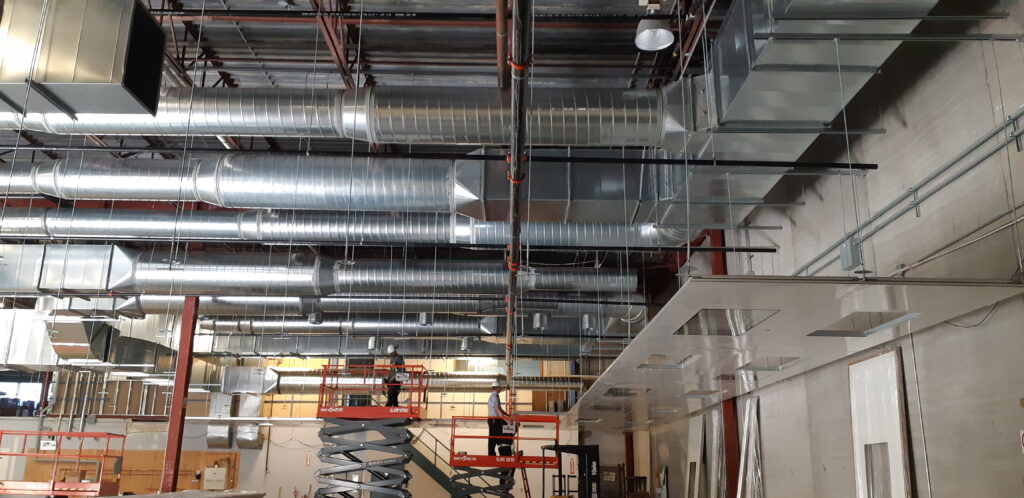
Flexibility for Different Crops
Cleanrooms are designed to support various crops, each with specific environmental needs. Here’s how thermal zoning helps achieve this flexibility:
Mushroom Cultivation: Mushrooms require high humidity (85-95%) and stable temperatures (55-65°F). By employing thermal zoning, you can maintain these conditions consistently across different areas of the cleanroom, reducing contamination risks and supporting optimal yields.
Cannabis Cultivation: Cannabis plants have varying environmental requirements at different growth stages. For instance, during the vegetative stage, temperatures of 70-80°F and humidity of 50-70% are ideal. In the flowering stage, cooler temperatures, and lower humidity (40-50%) are necessary to prevent mold. Modular cleanrooms with adaptable HVAC systems can meet these changing needs effectively.
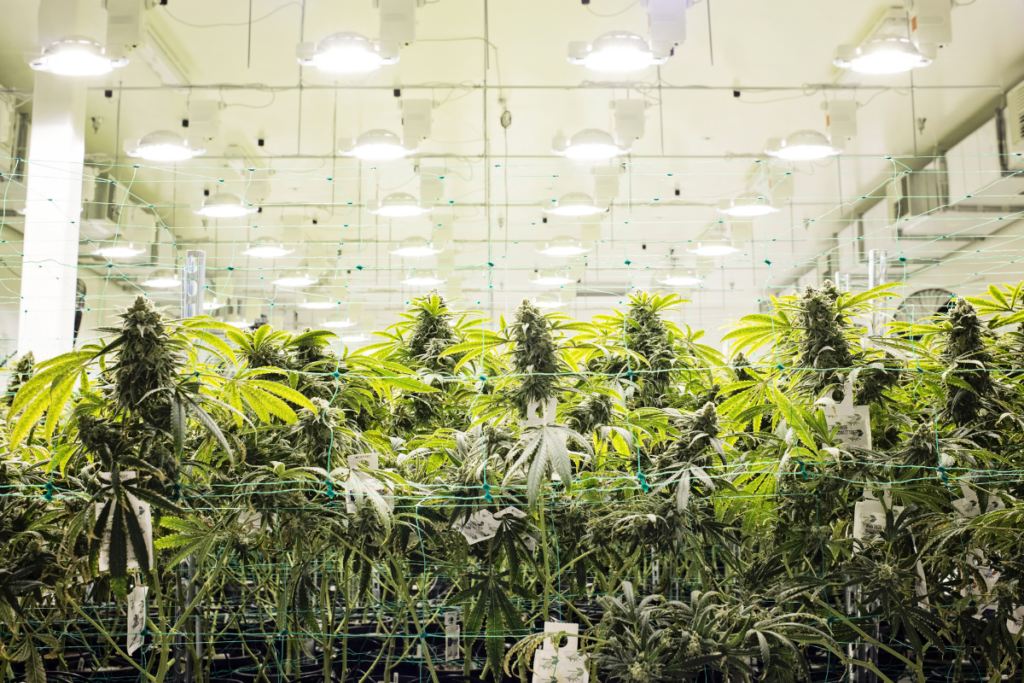
The Role of CO2 Management
CO2 management is essential in controlled environments for both mushroom and cannabis cultivation.
For Mushrooms:
Mushrooms release CO2 as a byproduct of respiration, and elevated CO2 levels can hinder their growth. To promote healthy mushroom development, CO2 concentrations should be maintained at low to moderate levels, typically around 600-800 ppm. Effective ventilation is key to preventing CO2 buildup and ensuring that excess CO2 is properly dispersed, which helps sustain an optimal growing environment.
For Cannabis:
Cannabis plants also require careful CO2 management, though their needs vary depending on the growth stage. During the vegetative phase, higher CO2 levels (around 1000-1500 ppm) can enhance growth and yield. However, in the flowering stage, it is crucial to reduce CO2 levels to prevent mold and ensure quality buds. Efficient ventilation and air circulation are vital for regulating CO2 concentrations throughout these various stages, supporting robust plant health, and maximizing yield.
Proper airflow and ventilation systems are essential in both cases to manage CO2 levels effectively and maintain a conducive environment for crop development.
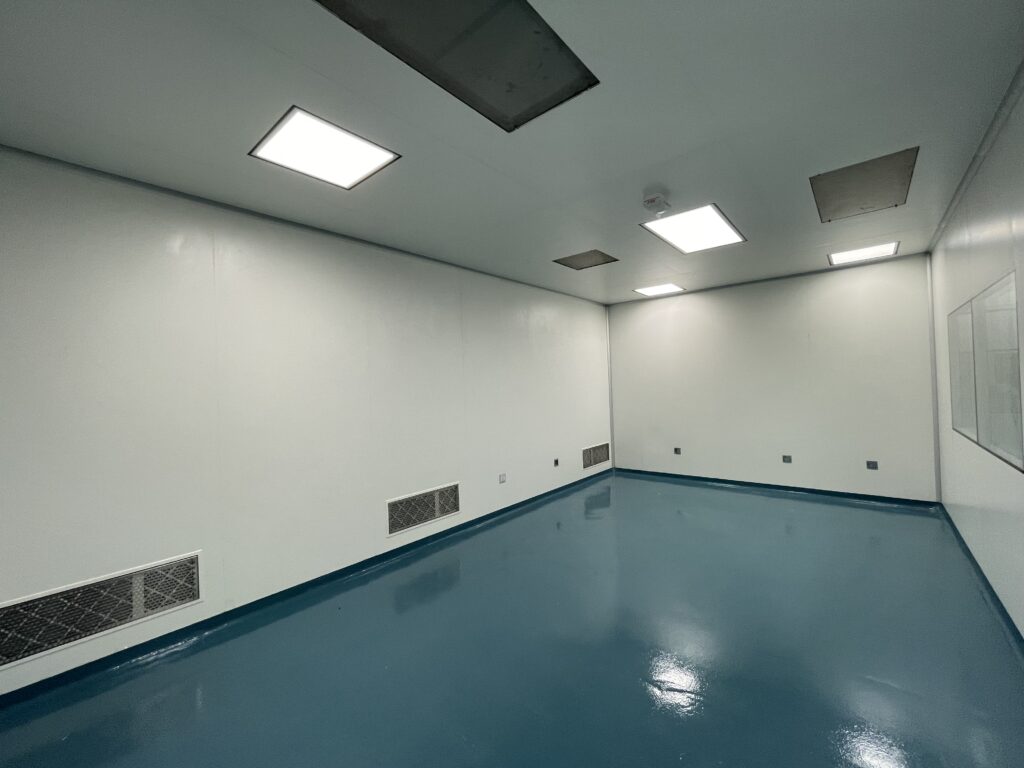
Our Approach in a Recent Job: DOAS Systems with Local Heaters and Humidifiers
In a recent project, we designed a state-of-the-art agricultural cleanroom using a Dedicated Outdoor Air System (DOAS) as a 100% fresh air unit. This approach was crucial for avoiding cross-contamination between different rooms and ensuring the possibility of having different thermal conditions (Temperature / Humidity) in different rooms at the same time.
Dedicated Outdoor Air System (DOAS):
By using the DOAS as a 100% fresh air unit, we ensured that all air entering the cleanroom was free from contaminants, which is essential for maintaining a clean environment. The DOAS system provided a steady flow of outdoor air, crucial for managing air quality and humidity.
Thermal Requirements:
To meet the precise thermal needs of different areas, we used local heaters and humidifiers. This setup allowed us to control temperature and humidity separately from the DOAS system’s airflow. By decoupling these functions, we were able to fine-tune the environment in each room, ensuring that each crop received the optimal conditions for growth.
Advantages:
- Cross-Contamination Prevention: The DOAS system ensured a continuous supply of clean, fresh air, minimizing the risk of cross-contamination.
- Precise Climate Control: Local heaters and humidifiers provided targeted control over temperature and humidity, adapting to the specific needs of each crop.
- Energy Efficiency: The combination of DOAS with local climate control devices optimized energy use and reduced operational costs.
Designing Cost-Effective HVAC Systems
When designing HVAC systems for cleanrooms, especially modular ones, consider these key factors to achieve a balance between cost and performance:
Integrated Zoning Systems
Modern HVAC systems use integrated zoning technology to control different areas independently. This ensures precise management of temperature and humidity, improving efficiency and reducing waste.
Energy-Efficient Equipment
Investing in energy-efficient equipment, such as variable-speed fans and high-efficiency heaters, lowers energy consumption and operational costs. Heat recovery systems capture and reuse energy from exhaust air, enhancing overall efficiency.
Smart Controls and Automation
Automation and smart controls adjust HVAC settings based on real-time data from environmental sensors. This dynamic approach maintains optimal conditions while conserving energy and reducing costs.
Seasonal Optimization
HVAC systems with seasonal optimization adjust operations based on external weather conditions. This ensures ideal indoor conditions year-round, regardless of outside temperature fluctuations.
Effective Filtration Systems
High-efficiency filters are essential for maintaining cleanroom air quality. They remove particulates, spores, and contaminants, ensuring a healthy environment for crops and preventing issues like mold.
Cost-Effective Insulation and Building Materials
Energy-efficient insulation and building materials, such as insulated panels and thermal curtains, improve HVAC system efficiency by reducing the reliance on heating and cooling.
Regular Maintenance and Monitoring
Routine maintenance and monitoring are vital for keeping HVAC systems running smoothly. Scheduled inspections and timely repairs prevent malfunctions and ensure peak performance.
Conclusion
At ACH-A Cleanroom Hub, we understand the unique requirements of cleanroom environments for growing high-value crops like mushrooms and cannabis. By implementing economical HVAC thermal zoning and advanced systems like DOAS with local heaters and humidifiers, we create tailored solutions that ensure precise climate control, optimize operational efficiency, and manage costs effectively.
Ready to Optimize Your Cleanroom Environment?
Explore how economical HVAC thermal zoning can transform agricultural applications and boost your efficiency. Do not let inefficiencies hold you back!
Contact us today to learn how we can help you implement smart zoning strategies for a cleaner, more productive environment!
GET IN TOUCH
Complete the form below to get in touch with our team.
